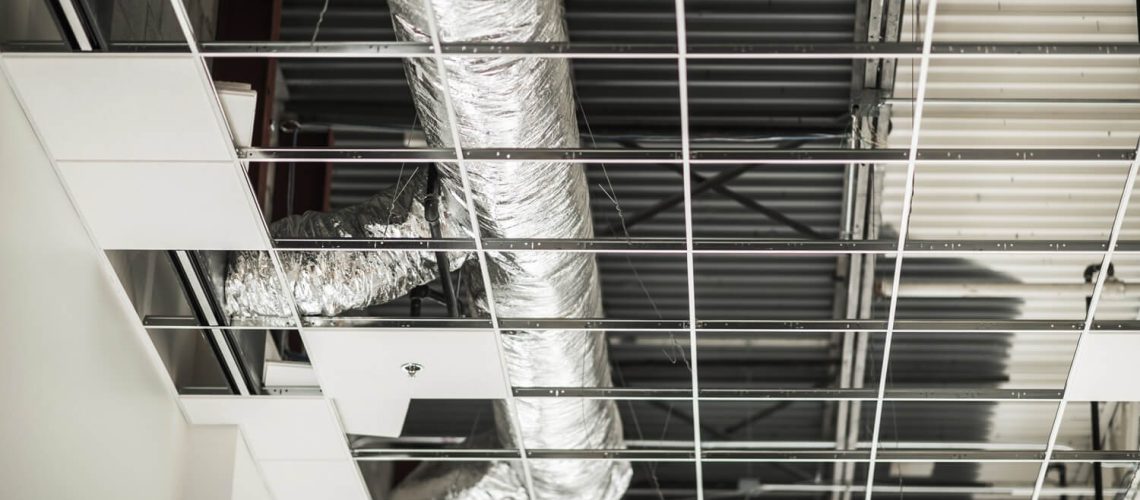The HVAC (Heating, Ventilation, and Air Conditioning) system plays an important role in ensuring comfortable temperatures in our homes or offices. Central to this system is the network of ducts that distribute heated or cooled air throughout the building.
Understanding the HVAC duct installation process can provide insights into how these systems work efficiently. Let’s explore the details of HVAC duct installation, its components and the steps involved.
What Are the Main Parts of Your HVAC Ductwork, and How Do They Work?
An air duct is a conduit or passage used in heating, ventilation, and air conditioning systems to deliver and remove air. These ducts can be made from various materials such as galvanized steel, aluminum, fiberglass, or flexible plastic.
The HVAC ductwork comprises several key components that work together to ensure the efficient distribution of heated or cooled air throughout the building. Understanding how these parts function is necessary for grasping the overall operation of the HVAC system.
Supply Ducts
Supply ducts are responsible for delivering conditioned air from the HVAC unit to different areas of the building. They play a crucial role in maintaining comfortable temperatures within individual rooms or zones. The supply ducts are typically connected to vents or registers, which release the conditioned air into the occupied spaces.
As the HVAC unit operates, the blower fan pushes air through the supply ducts, creating positive pressure that forces the air out of the vents and into the rooms. The airflow can be regulated using dampers installed within the ductwork, allowing for precise control over temperature distribution.
Return Ducts
Return ducts are tasked with collecting air from various rooms and returning it to the HVAC unit for reconditioning. Unlike supply ducts, which deliver conditioned air, return ducts transport stale or warm air back to the system. This air is then filtered, cooled, or heated before being recirculated into the building.
Return ducts typically do not have vents or registers in the occupied spaces; instead, they are connected directly to the HVAC unit. As air is drawn into the return ducts, it passes through filters that remove dust, pollen, and other airborne particles, improving indoor air quality.
Air Handlers
Air handlers serve as the heart of the HVAC system, responsible for regulating air temperature and humidity. They consist of several components, including:
Blower
The blower fan is responsible for circulating air through the ductwork. It draws air into the system through the return ducts, passes it over heating or cooling elements, and then pushes it back out through the supply ducts.
Heating or Cooling Elements
Depending on the season and desired temperature, air handlers may contain heating coils, cooling coils, or both. These elements heat or cool the air as it passes through the system, ensuring that it reaches the desired temperature before being distributed throughout the building.
Filter Racks
Filter racks are located within the air handler and hold air filters in place. These filters trap airborne contaminants, preventing them from entering the HVAC system and compromising its efficiency and performance.
Dampers
Dampers are adjustable valves located within the ductwork that regulate airflow. By opening or closing the dampers, HVAC technicians can balance the airflow between different zones or rooms, ensuring even temperature distribution throughout the building.
HVAC Duct Installation Process
Now that we have a basic understanding of air ducts and their components, let’s go into the HVAC duct installation process.
- Start With a Plan
The first step in HVAC duct installation is meticulous planning. This involves assessing the layout of the building, determining the optimal locations for vents and registers, and calculating the required duct sizes to ensure adequate airflow. A well-thought-out plan lays the foundation for an efficient and effective ductwork system.
- Create Duct Vents
Once the plan is in place, the next step is to create duct vents or registers in the walls, floors, or ceilings of the building. These vents serve as entry and exit points for conditioned air, allowing it to flow into and out of the rooms. Proper placement of vents is important for ensuring uniform heating or cooling throughout the building.
- Installing the Ducts
With the vents in place, the installation of ductwork can commence. This involves assembling and connecting the various duct components, including straight sections, elbows, reducers, and transitions. Care must be taken to ensure that the ducts are properly sized and sealed to minimize air leaks and maximize energy efficiency.
- Sealing the System
Sealing the ductwork is a critical step in the installation process that is often overlooked. Leaky ducts can result in energy wastage, reduced indoor air quality, and compromised system performance. To prevent air leaks, all joints and connections in the ductwork must be sealed with mastic or metallic tape. Additionally, insulation should be applied to ducts in unconditioned spaces to prevent heat loss or gain.
In Closing
HVAC duct installation is a meticulous process that requires careful planning, precise execution, and attention to detail. A properly installed HVAC duct system is essential for maintaining indoor comfort and air quality.
Last but not least, regular maintenance and inspections are also a must to identify and address any issues that may arise over time, such as leaks, blockages, or airflow restrictions.


